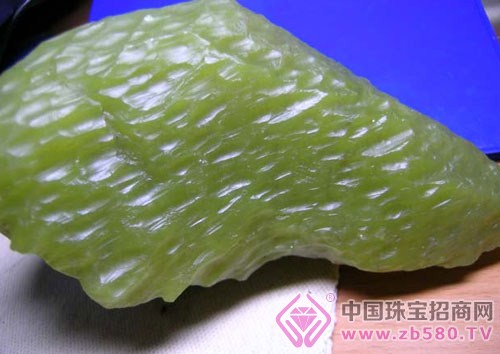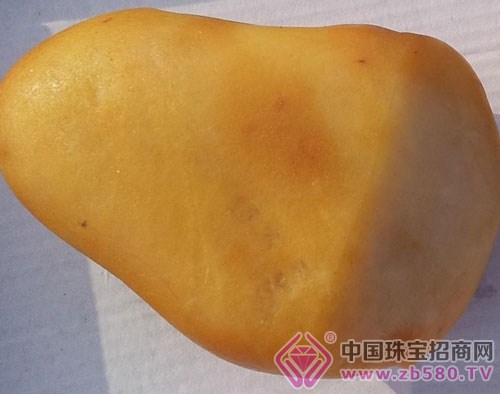Many friends will ask if Gobi is the same thing as Gobi Jade. In fact, the two are two different things. Now let's talk about the difference between the two. Let me talk about Hetian Yuge wall material: the southern part of the origin, the composition of tremolite, its structure is fiber interweaving structure, hardness: 6.5; specific gravity: 2.96. After the wall material is broken by the original mine body, the mountain material collapses, and the river water is taken to the foot of the mountain. After the river is diverted or cut off, it is formed by the weathering of hundreds of millions of years. Many of the Gobi materials found now are produced in the Gobi gorge in Wadi Gorge and the Ruoqiang County in Qiemo County, Xinjiang. These Gobi jade left the hardest and dense part of the jade, the skin is uneven, covered with sleek pits, full of history and vicissitudes. The overall feeling of oil is excellent, the hardness is also large, and the brightness is as high as glass. Of course, because of the poor formation conditions, most of them have flaws, usually cracks and black sunbursts, so the Gobi and the seed materials formed by wind erosion are very different. Unlike the Tianyu seed husk (with sweat pores), the Gobi material has no pores. It is only the surface of a smooth pothole that has been weathered by the vicissitudes of nature for thousands of years. As for the value, in a sense, the Gobi material is another kind of environment-made seed material. The real Gobi material is not only the tremolite, but also because the Gobi jade is not easy to form, the quantity is scarce, and it can only be picked up by hand. This scarcity Sex is directly proportional to its potential. Like the seed material, it is also divided into white jade, white jade, sapphire black, sapphire, ink jade, blue and white, jasper, black jasper and so on. Gobi jade Xinjiang “Gobi Yuyu†is also called Jinsiyu. It is a jade variety that can be carved in the 100km, terrace, Gobitan, desert and other regions of Karamay, China. It is produced in ancient silk. Road jade is golden yellow, because its color is close to Fujian's Tian Huangshi, also known as "silicone field yellow." It is mainly produced in secondary deposits that are transported over long distances by rivers. Origin: Although the production of Xinjiang Gobi jade is limited to a small area in northern Xinjiang, it is mainly produced in the Junggar Basin in northern Xinjiang. The Karamay City in the Yadan landform is 100 km away from the Wuerhe Devil City, but the color is very good. Mineral composition: quartzite, pyrophyllite. Chemical composition: SiO2; may contain elements such as Fe, Al, Ti, Mn, V. Generally translucent to opaque, hardness: 6.5-7 degrees specific gravity: 2.55-2.91 degrees 2.91, the chemical composition of the refractive index of 1.535 to 1.539 is also silicon dioxide (SiO2), Among them, known as gemstone light is the finest in Gobi jade, which is the cryptocrystalline aggregate of quartz (chalcedony). It usually contains traces or small amounts of other minerals, resulting in a multitude of colors. When the quality is pure, it is colorless. They are beautiful in color, such as red, sallow, muddy green, etc., beautiful and unusual. These are all respected for playing the stone world. Gobi jade can not be regarded as the scope of the soft jade tremolite. It can only be said that the quartz jade is the same as the crystal and the agate and the yellow dragon jade. Industry gemstone classification: gemstone light (chalcedony) (topaz) (aquamarine) Appreciation level: Gobi jade (quartzite) viewing level: colorful jade (mudstone) For this quartz-quality gemstone, personal recommendation is that in the world gem industry, Gobi jade has only been fried in recent years. It has the same collection value as Huang Longyu, but it is not very high, so friends who like it should measure it by themselves! Filtration Nonwoven,Geotextile Filter Fabrics,Nonwoven For Filtration,Filtration Non Woven Fabric Yizheng fengyisheng nonwoven co., ltd. , https://www.fys-nonwoven.com
